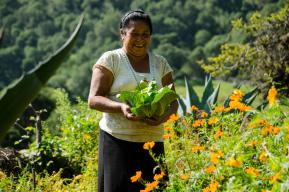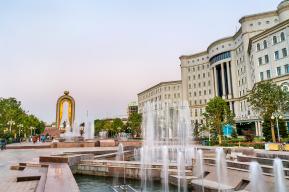News
UNESCO and partners inaugurate the rehabilitated Hosh Al Huqqiyya site
As part of an almost decade-long project to rehabilitate historic spaces in Palestine and preserve cultural built heritage, UNESCO recently inaugurated the Hosh Al Huqqiyya site in Qalandiya village.
The rehabilitation of the site was part of the Swedish-funded programme to revitalize 75 buildings and urban spaces: Local Development Through the Rehabilitation and Revitalization of the Historic Environment in Palestine.
Before & After Renovations
A reimagined future for Hosh Al Huqqiyya
The rehabilitation of Hosh Al Huqqiyya set out to transform the building into a center serving the community’s cultural institutions and micro-entrepreneurs. Following the extensive works, this aim has been achieved and the building is a vibrant space in the center of Qalandiya, hosting exhibitions, events and more.
RIWAQ Center for Architectural Conservation, UNESCO’s implementing partner in the project, is currently administering the building and renting out space to generate income to restore other historic buildings in the village. A number of spaces in the building are occupied by Tibaq, a local publishing house, and Palestine Writing Workshop, a local organization that focuses on children’s literature. Sanaa Mousa, a Palestinian singer, has used the building to run a project to document the history of music in Palestine. RIWAQ is also utilizing space in the building to conduct research. The project has ultimately paved the way for new potential rehabilitation interventions in the village, especially concerning the future use of other historic buildings.
Inauguration of Hosh Al Huqqiyya
Speaking at the inauguration, Head of Office and UNESCO Representative, Ms. Noha Bawazir said: “The rehabilitation of Hosh Al Huqqiyya is testament to collective efforts to protect and promote Palestinian built heritage by transforming abandoned spaces into vibrant facilities. UNESCO remains committed to accompanying our partners as we strive to continue to transmit Palestinian cultural heritage to future generations.”
The Director of RIWAQ, Ms. Shatha Safi, added:
“The restoration and rehabilitation of this site is part of a long-term collaboration between RIWAQ and the Swedish Government through UNESCO. The overall aim was to bring life back into the historic center of Qalandiya, preserve cultural heritage and eventually contribute to the vision of revitalizing the cluster of villages in North-East and North-West Jerusalem.”
The Consul General of Sweden, Mr Julius Liljestrom, said: “Sweden has had a long standing support to the revitalization and rehabilitation of the Palestinian Cultural Heritage. Since the start of the program in 2012, a total of 75 buildings and sites in Palestine have been rehabilitated. The preservation and restoration of these old buildings also serve to preserve and highlight the collective cultural and historical identity of the Palestinian people.”
The historic significance of the site
Hosh Al Huqqiyya, or Qasr Al Huqqiyya as it is also known, is located on the southern side of the historic town of Qalandiya Village, adjacent to the main street linking the villages of northwestern Jerusalem with Ramallah.
In a nod to modernism, the mansion was originally built during the late Ottoman period. The site has always stood out amongst the historic fabric of Qalandiya historic center, especially given its large size. It was initially constructed as a three-story residential complex. The building’s architecture is unique thanks to its many viewpoints and because it comprises many internal and external spaces.
The mansion is also historically significant and has a special connection with the village inhabitants as it was the residence of the local village leader (Al Mukhtar) – it was a space where disputes were resolved, and public issues discussed.
The rehabilitation of the building was completed over two phases with financial support from Sweden and other partners, including KFW through UNDP and Wallonie-Bruxelles International (WBI).









